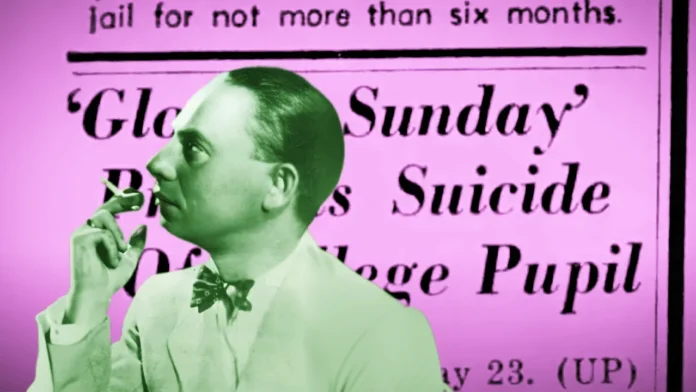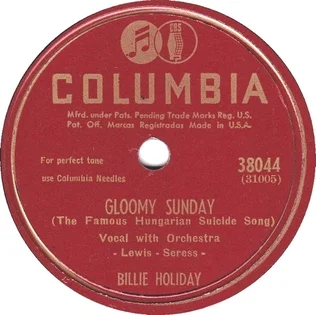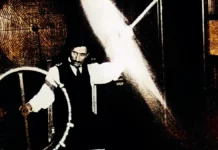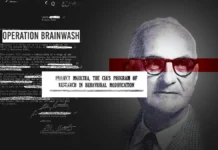Throughout history, music has held the power to evoke emotions, from joy and nostalgia to sadness and despair. Music can make you feel all sorts of different things. It can make you happy, sad, or even motivate you, but can music make you do more than this, can music motivate someone to take their own life?
There is a song published in 1933 called “Gloomy Sunday” also known as the “Suicide Song” that many believe has made many people take their own lives. No song has left a scarier mark and spooky past filled with stories, supposed suicides, and fights over whether it should be allowed to be played. As its creepy melody travels through the air, it keeps grabbing people’s attention and making them feel uneasy worldwide. How much truth is there to these claims? Is “Gloomy Sunday” truly a song that drives people to take their own lives, or is it just a myth? Let’s find out.
Contents
The Gloomy Sunday Song and the reports of suicides
“Gloomy Sunday,” also known as the “Hungarian Suicide Song,” is a famous song composed by a Hungarian musician named Rezső Seress released in 1933. Rezső Seress wrote the song while living in Paris in late 1932, trying to make a name for himself as a songwriter. At first, the song’s words were about feeling sad because of war, ending with a quiet prayer about people’s mistakes. Then, a poet named László Jávor wrote new words for the song, called “Sad Sunday,” where the main character wants to end his life after his lover dies. These new words became more popular than the old ones.
In 1935, a singer named Pál Kalmár recorded the song in Hungarian. The first version of the lyrics was called “Vége a világnak” (The world is ending), focusing on the sadness brought by the war. Later in 1936, Hal Kemp recorded it in English with lyrics by Sam M. Lewis. In the same year, another version was recorded by Paul Robeson with lyrics by Desmond Carter. It became famous in English-speaking places when Billie Holiday, a jazz singer, released her version in 1941.
The lyrics by Sam M. Lewis talked about suicide, and the record company called it the “Hungarian Suicide Song.” After the release of this song, there were stories that many people, especially Hungarians, have killed themselves while listening to this song. As the song “Gloomy Sunday” gained popularity in Europe, police began receiving reports of several suicides. During a live performance, two men shot themselves, and their bodies were found near gramophones playing the song in different houses. Bodies holding the song’s sheet music were also found in the Danube River. The death of a shoemaker named Joseph Keller, where a note with the lyrics “Gloomy Sunday” was found near his body, further inflamed the issue.
The death of a cobbler named Joseph Keller, who left a note containing the lyrics of “Gloomy Sunday” near his body, led police to link the suicides to the song. Bands playing live performances and gramophones in the homes of the dead began to be found associated with all suicides. Realizing the song’s impact, authorities immediately banned its broadcast on radio and warned other cities about the dangers of “Gloomy Sunday”. Despite these efforts, 17 people died, which started being associated with this song. A shopkeeper hanged himself with sheet music in Germany, and similar deaths occurred in Rome and London.
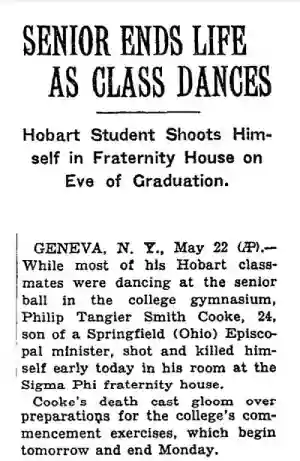
In America, it is believed that a college student shot himself after listening to the song. In 1936 a 13-year-old boy hanged himself and had the lyrics of Gloomy Sunday in his pocket. In Indianapolis, a man named Jerry Flanders was arrested after trying to poison himself while the song was playing at a bar.
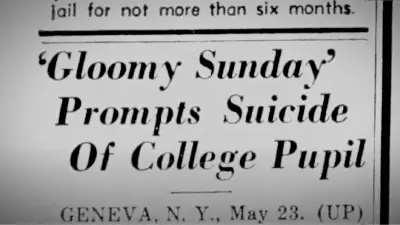
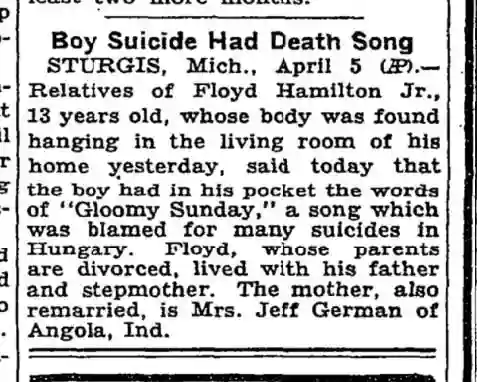
Billie Holiday recorded a famous version of “Gloomy Sunday” despite public outcry in 1941. By 1945, the song was linked to over 200 deaths worldwide. In response to the alleged connection between “Gloomy Sunday” and suicides, authorities in various nations, including Hungary’s government, briefly banned or restricted the song. There were calls to ban this song in various cities and states of America including New York, fueling speculation about the song’s supposed malevolent power. Many radio stations and broadcasting authorities worldwide exercised caution in airing it due to concerns about its impact on listeners’ emotions.
The rumors of the “Hungarian Suicide Song” began spreading worldwide, giving it publicity even before it was translated or played elsewhere. Unverifiable claims of suicides supposedly caused by the song also started emerging. However, some of these claims, like Jerry Flanders’ case in Indianapolis, have been exaggerated.
In the Time Magazine report where Jerry’s arrest was mentioned, it was stated that he paid a soloist to play “Gloomy Sunday” at his funeral, not at a bar. It’s unclear how and when the police were alerted.
Although investigations into other deaths found connections to the song, none were strong enough to directly blame it. While some cities tried to discourage the song from being played due to the legends, an official ban wasn’t imposed until 1941 by the BBC for Billie Holiday’s version. This was part of a broader effort to maintain worker and troop morale during World War II. The ban was lifted in 2002.
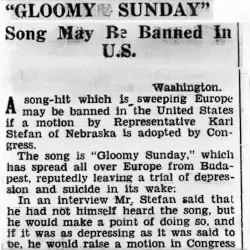
In the United States, Congressman Karl Stefan from Nebraska attempted to ban the song in 1936 but admitted he hadn’t listened to it. The motion to ban it either didn’t pass or never reached the floor for consideration.
A Suicide Song or a Myth
The myth of “Gloomy Sunday”: “Gloomy Sunday” is often dubbed the “Suicide Song,” although the idea that it directly triggers suicides is more of a myth than a proven fact. Despite numerous stories and urban legends suggesting a connection between the song and suicides, solid evidence to support these claims is lacking. Instead, it appears to be a cultural myth or urban legend associated with the song’s haunting melody and melancholic lyrics.
Discussion of Suicide Rates and Context: The significant rise in suicides globally during the 1930s, mainly attributed to the Great Depression, contextualizes the reception of “Gloomy Sunday.” Individuals already in despair likely resonated with the song’s message and somber melody. However, there’s little evidence to suggest that the song directly caused suicides. Researchers suggest that art, including music, doesn’t typically correlate with increased suicide rates. Further research is needed to delve deeper into this topic.
Pop Culture Impact of “Gloomy Sunday”: Over the decades, “Gloomy Sunday” has become ingrained in popular culture, appearing in various forms of media like films, television shows, and video games. Its somber tones are often used to emphasize moments of tragedy and introspection, solidifying its reputation as a symbol of melancholy and despair.
Historical Context and Suicide Rates in Hungary: Hungary, like many other nations, faced high suicide rates during the world war period. When “Gloomy Sunday” gained popularity in 1933, Hungary experienced a slight decrease in its suicide rate. This suggests that the song wasn’t necessarily a direct cause of suicides but rather a reflection of the socio-political issues of the time.
Origins and Disputes Regarding “Gloomy Sunday”: The origins of “Gloomy Sunday” are debated, with Rezso Seress claiming in a 1936 interview that a journalist named Laszlo initially wrote the lyrics for another composer. Seress then composed music for the lyrics, capturing the melancholic essence of the song. Despite claims of deaths attributed to the song, evidence supporting these claims is lacking, and there’s no documentation of bans in response to these deaths.
Themes and Lyrics of “Gloomy Sunday”: The lyrics of “Gloomy Sunday” are based on the themes of unrequited love, heartache, and the desire for eternal comfort. Poet László Jávar’s poetry paints a bleak picture of despair and resignation, with a narrator considering suicide as a means of escaping the pain of a lost love, but this does not mean that people committed suicide after listening to this song.
Some sources claim that Rezso’s heartbreak led to the creation of the song, while others say it was Laszlo’s, and some suggest it was a collaboration between the two. The most popular version is the one mentioned earlier, though it may only be popular because of the supposed suicide of Rezso’s ex-lover, which never actually happened. In reality, Rezso married Háni Nádler (sometimes known as Helénke Jászonyiné) in 1934, before “Gloomy Sunday” became a hit.
It’s important to note that Rezso was not an unknown struggling artist at the time. Between 1925 and 1933, he wrote, composed, and sold about 100 songs, forty of which were performed by other artists. In 1933, before “Gloomy Sunday,” Hungary’s magazine, The Delibab, referred to him as “a small grandmaster of composition.”
Life of Rezső Seress
Rezső Seress (born November 3, 1889) was a Jewish Hungarian pianist and composer. Seress lived most of his life in poverty in Budapest, where, as a Jew, he was sent to a Nazi labor camp during World War II. He survived the camp and continued work in theater and circuses as a trapeze artist. Following his injury, he turned to music and singing and learned to play the Piano.
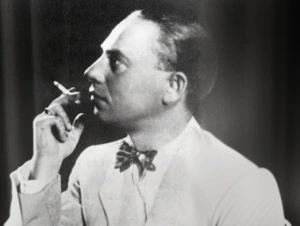
Seress composed numerous songs, including “Waiter, Bring Me the Bill,” “I Love Being Drunk,” and “Again on the Chain Bridge,” a song for the Hungarian Communist Party. However, his most famous composition is “Gloomy Sunday,” written in 1933, which became infamous due to its association with a series of suicides. Seress became depressed as his popularity faded and his commitment to the communist party was destroyed. Although he escaped forced labor throughout the war, his mother did not, which increased his grief.
As “Gloomy Sunday” continued to gain attention worldwide, Rezso faced his challenges. He was sent to a labor camp during World War II and was severely beaten, resulting in the loss of a kidney. After the war, Rezso returned home to find that his wife, who was Christian, had remarried. Hungary had become a Communist country, and Rezso’s music, along with many other artists’ works, was banned.
After “Gloomy Sunday” achieved widespread success worldwide, Rezso attempted to reconnect with his former lover in hopes of reviving their relationship. However, he tragically discovered that she had also taken her own life. Near her body, police found just two words written on a piece of paper: “Gloomy Sunday.”
Rezső Seress’ Death
Despite reconciling with his wife, Rezso fell into a depression, and in 1968, shortly after his 69th birthday, Rezso Seress tried to take his own life in Budapest. He first jumped off the balcony of his Budapest flat but survived, when he was taken to hospital he committed suicide by strangulating himself using a loose cable.
Before his death, he expressed his feelings, saying: “I stand amid this deadly success as an accused man. This fatal fame hurts me. I poured all the disappointments of my heart into this song, and it seems that others with feelings like mine have found their hurt in it.”
Conclusion
Since its release, “Gloomy Sunday” has been shrouded in stories of several suicides, adding to its mysterious reputation. These tales of people allegedly ending their lives while listening to the song led to bans in some places, further fueling its enigmatic aura. The tragic suicide of Sérés in Budapest in January 1968 only added to the song’s mystique.
Despite its controversial reputation, “Gloomy Sunday” has been covered by numerous artists across different genres. Billie Holiday’s rendition, released in 1941, is perhaps the most famous, imbuing the song with her signature jazz style and soulful vocals. Other notable versions by artists like Sarah Vaughan, Björk, and Elvis Costello each offer a unique interpretation of the melancholic melody.
The song has stirred significant interest and debate in music history. It gained the moniker “Suicide Song” during the Great Depression and World War II, and it still captures attention worldwide. However, whether it directly leads to suicides is more myth than fact. Despite stories and urban legends suggesting a link between the song and suicides, there isn’t solid evidence to support the claim. Instead, it seems to be more of a cultural myth or urban legend surrounding the song’s haunting melody and melancholic lyrics.
Also Read:
- Piltdown Man Mystery: Missing Link Between Humans and Apes or Fraud
- Psychotronic Torture: Mind Control Using Electromagnetic Radiation
Sources
- Congress, The Library of. “Seress, Rezső – LC Linked Data Service: Authorities and Vocabularies | Library of Congress, from LC Linked Data Service: Authorities and Vocabularies (Library of Congress)”
- “Rezsoe Seres Commits Suicide; Composer of ‘Gloomy Sunday'”. Microfilm scan. Obituaries. New York Times. Jan 14, 1968. p. 84.
- “Sheet music: Gloomy Sunday (442×694)”. Mutablesound.com
- “Hungarian composer Rezső Seress dreamed of changing the world with his music”. NPR.
- “Gloomy Sunday”. Theblues-thatjazz.com
- There Are Places I Remember: “Gloomy Sunday”.
- “Gloomy Sunday – Sam M. Lewis Lyrics”. Phespirit.info
- The 21st Floor » Blog Archive » It may be freaky Friday, but Sunday is gloomy. (n.d.). https://web.archive.org/web/20120425145013/http://www.thetwentyfirstfloor.com/?p=1041
- Rezső Seress’ Gloomy Sunday – Board – Collected Gloomy Sunday knowledge. (n.d.). https://web.archive.org/web/20120425150835/http://rezsoseress.proboards.com/index.cgi?board=sunday&action=display&thread=8
- “Gloomy Sunday – Overture To Death”. Phespirit.info
- Theresa’s Haunted History of the Tri-State: Combining the Fact with the Folklore, “The Hungarian Suicide Song”. http://theresashauntedhistoryofthetri-state.blogspot.com/2011/03/hungarian-suicide-song.html
- Harry Witchel (2010). You Are What You Hear: how music and territory make us who we are. Algora Publishing. p. 106. ISBN 9780875868059.
- “Gloomy Sunday – Music to Die for? – A14150477”. H2g2.com. http://h2g2.com/dna/h2g2/plain/A14150477
- “Gloomy Sunday Suicides”. Snopes.com. 12 November 1996. http://www.snopes.com/music/songs/gloomy.asp
FACT CHECK: We strive for accuracy and fairness. But if you see something that doesn’t look right, please Contact us.
DISCLOSURE: This Article may contain affiliate links and Sponsored ads, to know more please read our Privacy Policy.
Stay Updated: Follow our WhatsApp Channel and Telegram Channel.

